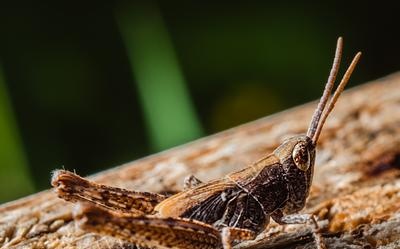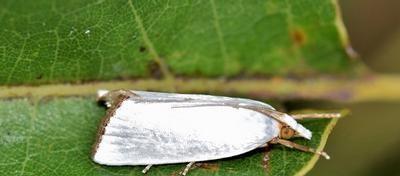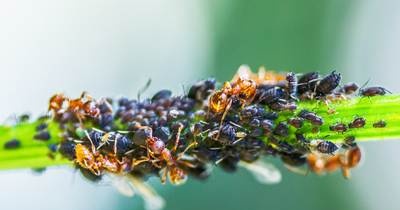|
 Entomology is the science of insects. It includes a whole range of scientific disciplines that develop theoretical and practical issues related to the life and activities of these usually small, but numerous and diverse animals. Entomology is the science of insects. It includes a whole range of scientific disciplines that develop theoretical and practical issues related to the life and activities of these usually small, but numerous and diverse animals.
Insects play an important role in the circulation of substances and in the formation of the Earth's biosphere. They have a significant impact on human life and economic activity.
To date, about a million species of insects have been described, which significantly exceeds the number of all plants and animals existing on Earth combined. In a number of countries, including African ones, especially in the tropical part of Africa, the insect fauna has been insufficiently studied. It is assumed that the total number of insect species living on our planet reaches one and a half million.
Insects have mastered, in essence, all possible spheres of habitation: they live in water, on earth, in soil, air, parasitize on the surface and inside animals and plants, contribute to the decomposition of organic residues, that is, they have a sanitary function, etc. From the point of view, representatives of this class of animals have an exceptional ability to adapt (adapt) to any features of the climate and different habitats.
In the process of individual development, some insect species repeatedly and radically change their habitat, which is possible due to the peculiarities of their morphology and physiology. For example, many mosquitoes lay eggs in fresh water bodies and their larvae develop in water, while mature winged individuals live in the air. The larvae of some gadflies live under the skin of cattle, in the nasal cavities of a camel
or buffalo, in the nasal and frontal cavities of sheep, the stomach of a horse. The matured larvae fall out onto the ground and burrow into the soil, where they pupate and undergo metamorphosis. Winged individuals flying out of pupae live freely in the air and in some species are completely harmless.
Due to morpho-physiological characteristics and ecological lability, insects live where other organisms cannot live. For example, in the deserts of Egypt, in zones of sand dunes where vegetation is absent, beetles are found that feed on dry organic residues carried by the winds.
Active migrations of winged insects contribute to their wide dispersal. The small size and weight of the body, permeated with air-filled tubes - tracheas, with the help of which breathing is carried out, favor passive transport of insects by convection air currents and winds over long distances. Synanthropic (accompanying humans) species carry out migrations parallel to human migrations, using more and more advanced and faster means of transportation with the development of technology.
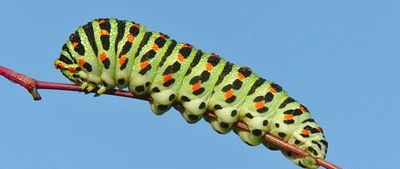 Despite the variable body temperature (poikilothermic), which generally follows the temperature of the external environment, insects are distributed throughout the globe, from the southern to northern boundaries of organic life. This is achieved due to the special physiological qualities that representatives of this class possess. In the metabolism of insects, there are special physiological and biochemical mechanisms. They provide, on the one hand, under favorable conditions, high physiological activity, accompanied by movement, feeding, reproduction, development, and on the other hand, allow a state of long and deep dormancy, such as diapause, which engulfs insects when approaching or the onset of unfavorable conditions.The state of physiological dormancy in insects is accompanied by a sharp increase in the resistance of their body to cold, heat and other unfavorable combinations of abiotic factors, as well as an increase in resistance to insecticides. The state of rest protects them not only against an unfavorable combination of climatic conditions, but also against a lack of food, the presence of which, due to the often narrow food specialization of certain species, is seasonal and often random. Despite the variable body temperature (poikilothermic), which generally follows the temperature of the external environment, insects are distributed throughout the globe, from the southern to northern boundaries of organic life. This is achieved due to the special physiological qualities that representatives of this class possess. In the metabolism of insects, there are special physiological and biochemical mechanisms. They provide, on the one hand, under favorable conditions, high physiological activity, accompanied by movement, feeding, reproduction, development, and on the other hand, allow a state of long and deep dormancy, such as diapause, which engulfs insects when approaching or the onset of unfavorable conditions.The state of physiological dormancy in insects is accompanied by a sharp increase in the resistance of their body to cold, heat and other unfavorable combinations of abiotic factors, as well as an increase in resistance to insecticides. The state of rest protects them not only against an unfavorable combination of climatic conditions, but also against a lack of food, the presence of which, due to the often narrow food specialization of certain species, is seasonal and often random.
The resting state can be of the type of summer diapause caused by an increase in temperature or a lack of humidity; it can also be a winter diapause, which comes as a measure of protection against cold weather.
In the process of a long historical development, insects have developed special physiological and biochemical mechanisms, which, along with often very peculiar behavior and lifestyle, protect the body at rest from drying out, freezing, and exhaustion. For example, many species of the temperate climatic zone have subtle and complex, not yet fully understood physiological mechanisms that perceive a change in the duration of daylight hours as a signal of the approach of an unfavorable (or favorable) season. This signal changes the intensity and nature of metabolism (photoperiodic reaction), and processes begin that lead the body to a state of rest - diapause or to a state of active life.
Insect diapause can be deep and prolonged, or unstable and short-lived. In some species, long-term diapause is known, which lasts 8-17 years under certain conditions.
The body size of insects is small in comparison with other animals. However, the biomass of some of the so-called “mass” species can be very high. For example, the biomass of a locust swarm is expressed in tons. Tons of Colorado potato beetle were harvested in Western Europe. No less "weighty" are myriads of blood-sucking dipterans in the taiga part of the northern hemisphere, called in Russia the word "gnus".
Of the huge number of insect species studied to date, only a few are used by humans as useful, bred, domesticated animals. With well-known exaggerations, these include some types of silkworms (mulberry, Chinese oak) and the honey bee. Certain species are used in medicine for the manufacture of medicines (bee venom, formic acid, and others) or in agriculture for the destruction of pests (predatory and parasitic species that destroy harmful insects).
A much larger number of insect species are themselves pests of cultivated plants, destroyers of food reserves, parasites and carriers of a number of dangerous diseases of humans and animals. Some species often complicate the development of new territories (gnat, tsetse fly and others).
The overwhelming majority of insects, fortunately, are neutral for humans and their activities, and a significant part of them brings indirect benefits, being pollinators of plants. Without the insect world, many flowering plants, including most cultivated plants, would lose their fruits and seeds. Probably, the positive role of insects on the earth is much greater than the harm they cause.
However, in Egypt, where the temperature is high for most of the year, the growing season is very long, and there is no frost at all, insects cause significant damage to human economic activity and his health.
The area occupied by Egypt is about 1,002,000 square meters. km., but only about 3% of its entire territory is cultivated. With the exception of a few oases, agriculture is concentrated in the Nile Valley, which stretches from south to north for nearly 1,000 km. In the southern part of the country, the Nile valley sometimes narrows to 5-6 km, while in the northern - in the river delta, its width reaches 270 km.
As you know, water plays a particularly important role for Egypt.It is no exaggeration to say that life here is possible only where water reaches. The Nile in Egypt is almost the only source of water. Narrow and rapids in the upper reaches, it becomes abundant and majestic in the middle and lower reaches. Numerous main and subsidiary canals and canals cut the fertile lands of the Nile Valley into small plots where intensive farming is carried out. More thermophilic plants are replaced by less thermophilic plants in the rotation, which makes it possible to harvest two or three crops per year. In the Nile Delta, the main summer culture is cotton, the long-fiber varieties of which are unmatched and highly regarded in the world market. Export of cotton makes up a significant part of the country's income, and this crop is given special attention in Egypt.
In Upper Egypt, cereal crops (wheat, barley), which ripen in April, occupy a significant place in the crop rotation. The winter forage crop is everywhere clover, a bright green carpet spreading under the usually cloudless winter sky. Clover is almost exclusively used to feed pets that are tied up outdoors all year round. Rice, legumes, vegetables are cultivated a lot, the latter especially a lot around cities. Potatoes, tomatoes, cabbage, salad, cucumbers are planted at different times and bear fruit at different times of the year. Across the country, date palms of many varieties are distributed and grow in groups and alone, giving a special flavor. Plantations bananas and citrus fruits, which supply the population with fruits almost all year round, are the most numerous and extensive in some oases and along the middle course of the Nile.
This brief information about the country's economy allows you to go directly to the issues of agricultural and medical entomology in Egypt.
The number of generations per year for each insect species is determined primarily by the temperature of the environment and the availability of food. Therefore, it is natural that in Egypt many, both ubiquitous and aboriginal pests of agriculture, have an increased number of generations (generations) in a year and cause, accordingly, increased harm.
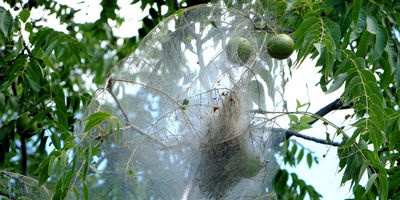 Reproduction of one of the most common and harmful to agriculture in Egypt, scoop butterflies Prodeni a lituraThe caterpillars of which are called the cotton leafworm occurs all year round. This pest is polyphagous and gives seven consecutive generations a year. Summer caterpillars feed on cotton, damaging it from the time of emergence of young shoots to maturity, and autumn and winter ones - clovers with which the soil is sown after harvesting cotton. The damage that this insect inflicts only on cotton is estimated at 20-40 million Egyptian pounds a year. In addition, the annual cost of fighting it fluctuates between 4 and 14 million Egyptian pounds. Reproduction of one of the most common and harmful to agriculture in Egypt, scoop butterflies Prodeni a lituraThe caterpillars of which are called the cotton leafworm occurs all year round. This pest is polyphagous and gives seven consecutive generations a year. Summer caterpillars feed on cotton, damaging it from the time of emergence of young shoots to maturity, and autumn and winter ones - clovers with which the soil is sown after harvesting cotton. The damage that this insect inflicts only on cotton is estimated at 20-40 million Egyptian pounds a year. In addition, the annual cost of fighting it fluctuates between 4 and 14 million Egyptian pounds.
The second most economically damaged insect is the butterfly, the cotton moth (Pectinophora gossypiella). Its pink caterpillars at the end of their larval development ("pink worm") feed on cotton seeds, as a result of which the capsule is deformed and the fiber does not develop. In different years and in different zones of Egypt, the loss of raw cotton from this pest reaches from 5% to 80%.
Growing long staple cotton in Egypt, where it has so many insect enemies, is not easy. Several types of aphids, especially cotton aphids and tobacco trippe, cause great harm, especially in the early stages of plant development. Green cottonbug and bedbug feed on cotton leaves Oxycarenus hyalinipennisdamaging seeds.
Vegetable crops in Egypt also have a lot of pests, both local and foreign. For example, cabbage or turnip whites, which can be found in every vegetable garden throughout Europe, fly here against the backdrop of the pyramids.Less known as a pest is the epilyahna ladybug quarantine for Europe, herbivorous, unlike most of its predatory and useful relatives.
Citrus crops in Egypt have a very large number of pests from the order of the equiptera and the suborder of scale insects and scale insects. These small insects suck out juices from branches, leaves, fruits. The Mediterranean fly (also quarantine for many European countries) causes great harm to the fruit, the larvae of which develop in the pulp of the fruit, damaging them and causing decay.
High temperatures during most of the year and the absence of frost in winter, as already mentioned, contribute to the development of harmful insects, therefore the development of effective measures for the prevention and control of agricultural pests in Egypt is an important public issue.
An equally important problem for Egypt is the solution of a number of practical problems of veterinary and medical entomology.
The Nile and its irrigation canals, in the numerous branches of which heated water saturated with organic matter stagnate, serve as a favorable environment for the development of mosquitoes and mosquitoes, and mosquito fevers and malaria are still frequent guests in the country. The decaying waste in villages and townships serves as a constant source for the breeding of flies, which are known to be carriers of many diseases dangerous to humans, including dysentery, a frequent summer illness of children in Egypt.
The common housefly in the conditions of Egypt gives up to 17 generations a year (in a zone of temperate climate, the housefly gives from two to five generations)
The number of generations per year has also been increased for other synanthropic species of flies that inhabit the Nile Valley. In case of tethered (head) keeping of livestock, some species of gadflies, flies and other parasites and predators from the world of insects cause great harm to livestock in Egypt.
These are the conditions in which the Egyptian entomologists have to formulate and conduct research.
In terms of medical and veterinary entomology, over the years, Egyptian scientists have studied the housefly, the most common in Egypt, which is an active vector of many serious human diseases. Studied its biology, ecology, behavior, physiology of the senses and measures to combat it. A large series of works has been carried out to study another species, the so-called cattle fly (Musca sorbens), which plays a major role in the spread of eye diseases in Egypt.
Other flies of veterinary and medical importance, as well as desert flies that accompany domestic animals, were also studied. These studies made it possible to discover many new, native to Egypt species and understand their epidemiological significance.
Much work has been done on the study of insects such as the rat flea, human flea, bed bug, Egyptian malaria mosquito, house mosquito and many other insects.
The study of chewing lice led to the discovery and description of 55 species new to Egypt, which are parasites of birds and mammals of Egypt.
Intensive research is being conducted on ticks that parasitize domestic animals, with particular emphasis on their ecology, food connections, distribution throughout the country, and biochemistry. This research provides important new data to develop and improve the effectiveness of control measures for these parasites and disease vectors.
 In the field of agricultural entomology, the Department of Entomology paid much attention to the study of locusts in Egypt, some species of which cause significant damage to vegetation in the oases and the Nile Valley. Studied their biology, methods of settlement, physiology of the sense organs. This work was carried out in contact with the International Locust Control Center in London. In the field of agricultural entomology, the Department of Entomology paid much attention to the study of locusts in Egypt, some species of which cause significant damage to vegetation in the oases and the Nile Valley. Studied their biology, methods of settlement, physiology of the sense organs. This work was carried out in contact with the International Locust Control Center in London.
A number of studies have been devoted to butterflies damaging citrus and other fruit crops, thrips, aphids, hay-eaters, fruit flies (Seratitis capitate) and others. Special attention is constantly being paid to the cotton bollworm - the permanent enemy of agricultural crops in Egypt.
In nature, any of its ecological niches is firmly occupied by certain species of plants and animals, each of which has its own symbionts, competitors, parasites, and predators. Predatory and parasitic arthropods, bacterial, fungal and viral diseases of insects can severely limit the number of harmful species in agriculture. The biological method of control is based on this relationship between insect pests and their parasites, predators, and diseases. The purpose of this method is to create conditions for the development of local “or introduced from other countries, parasites and predators, imperceptibly, but continuously exterminating agricultural pests. The biological method can be successfully applied instead of episodic, not entirely safe and expensive chemistry. The successful use of this method is impossible without a good knowledge of biology, ecology, physiology of both the pest and its parasites or predators. At the same time, even for the most common species of pests, the range of their parasites and predators, which changes in a geographic aspect, and the relationship between the parasite and the host has not been sufficiently studied.
Constantly feeling the hot breath of the desert stretching for hundreds of kilometers on both sides of the Nile Valley, Egyptian entomologists pay much attention to the study of the morphological, ecological, physiological adaptations of insects to life in the desert. On this path, scientists have made many new interesting discoveries: as it turned out, the larvae of a number of desert insects (some Diptera, Hymenoptera), whose development lasts from one to several years, have a closed hind gut and do not excrete excrement during the entire larval development. Their excrement, which accumulates in small quantities in the intestines, by the end of larval development contains a large amount of uric acid, which contributes to the conservation of water in the body. The structure of the intestine in some desert insect species provides for the secondary use of water excreted in other conditions with excrement. A number of other morphophysiological adaptations to the retention and economical use of water in the body of insects have been discovered, which is a vital problem for desert conditions. The features of the way of life of many desert species of beetles, flies, hymenoptera have been studied, on the development of which existence in the desert has left an indelible adaptive imprint.
M. Hafez
|
 Entomology is the science of insects. It includes a whole range of scientific disciplines that develop theoretical and practical issues related to the life and activities of these usually small, but numerous and diverse animals.
Entomology is the science of insects. It includes a whole range of scientific disciplines that develop theoretical and practical issues related to the life and activities of these usually small, but numerous and diverse animals. Despite the variable body temperature (poikilothermic), which generally follows the temperature of the external environment, insects are distributed throughout the globe, from the southern to northern boundaries of organic life. This is achieved due to the special physiological qualities that representatives of this class possess. In the metabolism of insects, there are special physiological and biochemical mechanisms. They provide, on the one hand, under favorable conditions, high physiological activity, accompanied by movement, feeding, reproduction, development, and on the other hand, allow a state of long and deep dormancy, such as diapause, which engulfs insects when approaching or the onset of unfavorable conditions.The state of physiological dormancy in insects is accompanied by a sharp increase in the resistance of their body to cold, heat and other unfavorable combinations of abiotic factors, as well as an increase in resistance to insecticides. The state of rest protects them not only against an unfavorable combination of climatic conditions, but also against a lack of food, the presence of which, due to the often narrow food specialization of certain species, is seasonal and often random.
Despite the variable body temperature (poikilothermic), which generally follows the temperature of the external environment, insects are distributed throughout the globe, from the southern to northern boundaries of organic life. This is achieved due to the special physiological qualities that representatives of this class possess. In the metabolism of insects, there are special physiological and biochemical mechanisms. They provide, on the one hand, under favorable conditions, high physiological activity, accompanied by movement, feeding, reproduction, development, and on the other hand, allow a state of long and deep dormancy, such as diapause, which engulfs insects when approaching or the onset of unfavorable conditions.The state of physiological dormancy in insects is accompanied by a sharp increase in the resistance of their body to cold, heat and other unfavorable combinations of abiotic factors, as well as an increase in resistance to insecticides. The state of rest protects them not only against an unfavorable combination of climatic conditions, but also against a lack of food, the presence of which, due to the often narrow food specialization of certain species, is seasonal and often random. Reproduction of one of the most common and harmful to agriculture in Egypt, scoop butterflies Prodeni a lituraThe caterpillars of which are called the cotton leafworm occurs all year round. This pest is polyphagous and gives seven consecutive generations a year. Summer caterpillars feed on cotton, damaging it from the time of emergence of young shoots to maturity, and autumn and winter ones - clovers with which the soil is sown after harvesting cotton. The damage that this insect inflicts only on cotton is estimated at 20-40 million Egyptian pounds a year. In addition, the annual cost of fighting it fluctuates between 4 and 14 million Egyptian pounds.
Reproduction of one of the most common and harmful to agriculture in Egypt, scoop butterflies Prodeni a lituraThe caterpillars of which are called the cotton leafworm occurs all year round. This pest is polyphagous and gives seven consecutive generations a year. Summer caterpillars feed on cotton, damaging it from the time of emergence of young shoots to maturity, and autumn and winter ones - clovers with which the soil is sown after harvesting cotton. The damage that this insect inflicts only on cotton is estimated at 20-40 million Egyptian pounds a year. In addition, the annual cost of fighting it fluctuates between 4 and 14 million Egyptian pounds. In the field of agricultural entomology, the Department of Entomology paid much attention to the study of locusts in Egypt, some species of which cause significant damage to vegetation in the oases and the Nile Valley. Studied their biology, methods of settlement, physiology of the sense organs. This work was carried out in contact with the International Locust Control Center in London.
In the field of agricultural entomology, the Department of Entomology paid much attention to the study of locusts in Egypt, some species of which cause significant damage to vegetation in the oases and the Nile Valley. Studied their biology, methods of settlement, physiology of the sense organs. This work was carried out in contact with the International Locust Control Center in London.